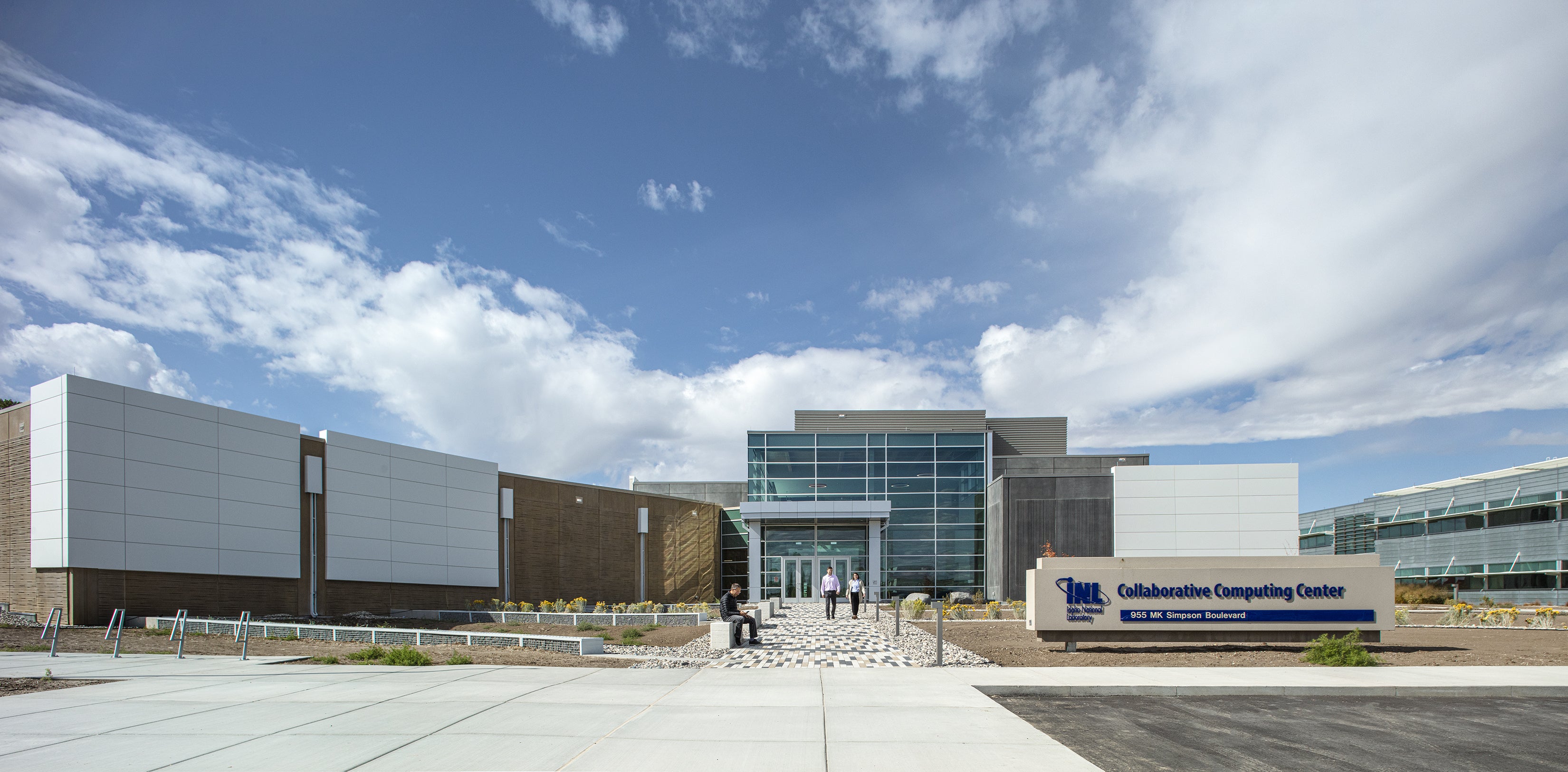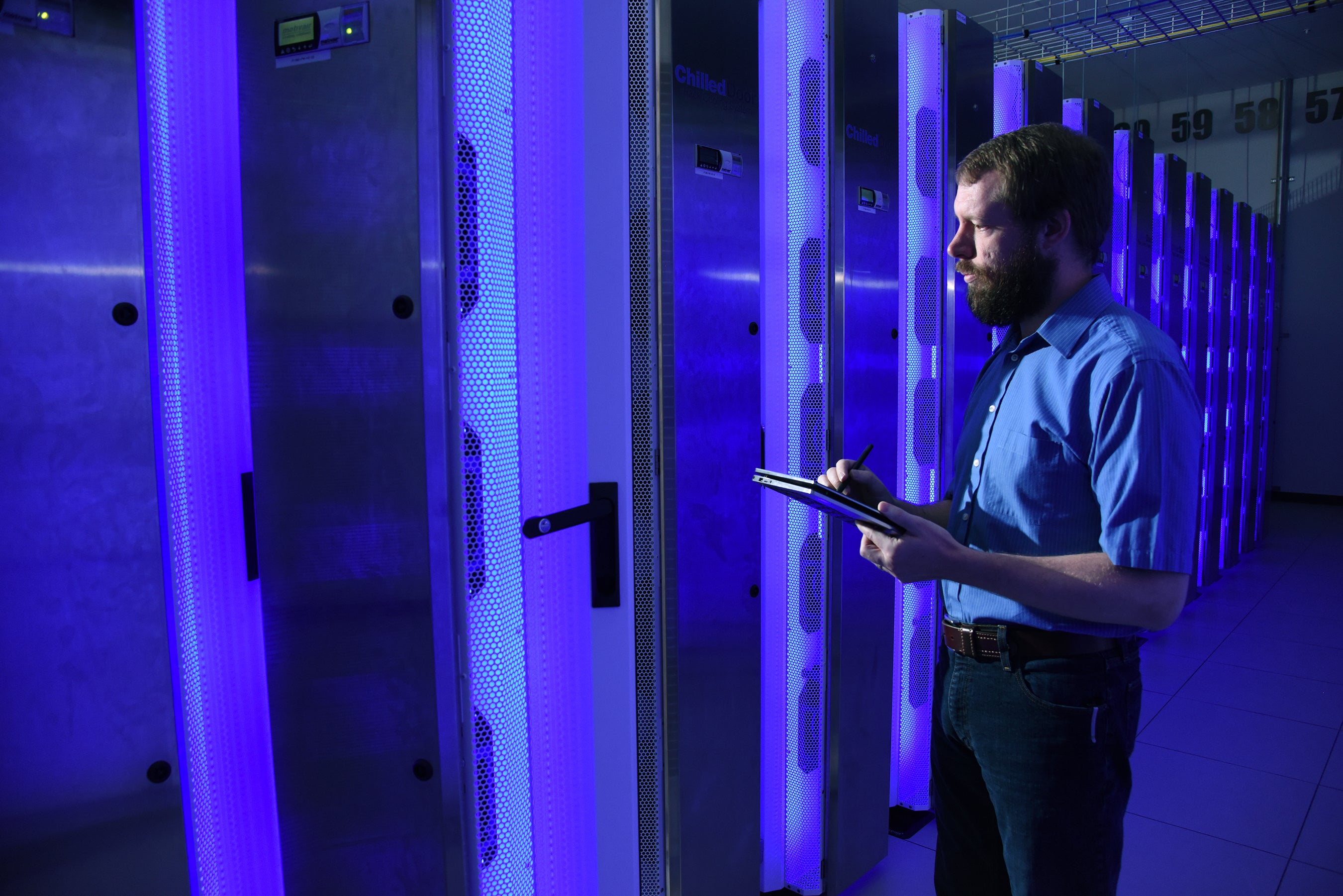
Boise State University, Idaho Power and Idaho National Laboratory (INL) have announced a new collaboration to advance high-performance computing, weather modeling and workforce development for the state of Idaho.
This partnership will support Idaho Power’s weather forecasting capabilities, bolster the state’s computing potential, and advance academic opportunity for Boise State researchers and students.
The project calls for the collection and analysis of weather data by a supercomputer at INL’s new Collaborative Computing Center (C3). The data, which will be made available to the public and researchers, will be used to improve weather-forecasting capabilities at Idaho’s largest electric utility. Boise State and Idaho Power will provide the computer equipment, which will be housed in four racks at C3 and is expected to be installed in January.
“The public-private collaboration effort this represents is truly unprecedented in the state,” said Boise State interim Vice President for Research Harold Blackman. “The high-performance computing capabilities that this will provide Boise State students, while supporting the modeling and simulation needs of Idaho Power, is a prime example of how true collaboration for the good of all is done.”
C3 is a state-owned facility in Idaho Falls that offers high-speed fiber optic internet connectivity to entities across the state via the Idaho Regional Optical Network (IRON) – from high schools to universities and state government offices. The facility was designed to enhance collaboration between INL researchers, students and faculty at the state’s universities and community colleges, and industry partners such as Idaho Power.

“The State of Idaho, INL, Idaho Power, Boise State and students all win with this partnership,” said Max Davis-Johnson, Boise State Chief Information Officer. “The creativity and cooperation to make this partnership happen is just the beginning of what we are going to accomplish. The future of computational computing is very bright in Idaho.”
INL has partnered with universities for more than a decade through the Center for Advanced Energy Studies, as well as less-formal arrangements that allow the universities access to the laboratory’s state-of-the-art supercomputers.
“This is exactly the sort of teamwork we envisioned for the C3 building,” said Eric Whiting, Division Director of INL’s Advanced Scientific Computing.
Once the equipment is in place, university students and faculty will access the publicly available data remotely, via IRON, to help improve weather-forecasting capabilities of Idaho Power. This will help the utility more efficiently manage its operations, from power generation to trading energy on the wholesale market. Idaho Power also collaborates with the Idaho Water Resource Board and water users in various basins in a cooperative cloud-seeding program to improve water supply conditions throughout the Snake River basin.
C3 will enable Idaho Power and other cloud-seeding program participants to efficiently and accurately tackle weather modelling and forecasting with support from Boise State researchers. The publicly available data generated from these forecasts will not only help Idaho Power, but will be a source of data for Boise State researchers and benefit the whole state of Idaho.
“Here’s an opportunity to become highly skilled to do this kind of computational work, and I’m a firm believer that being exposed to computation for everybody across domains is important; you become more competitive in the job market,” said Mendi Edgar, the Associate Director of Boise State’s Research Computing Support department. “What we’re doing is upping the ante on what our students are exposed to, what kinds of infrastructure they have access to, so we can contribute to the highly-skilled workforce here in Idaho.”
“It’s not just a CNN weather forecast, this is Idaho specific: an Idaho customized weather forecast,” Whiting said. “This will provide benefits statewide – it will benefit the education ecosystem, provide career opportunities. It shows the real-world application of things that are happening here at C3.”
“This public/private partnership is a great example of the type of innovative collaboration taking place at Boise State University and will provide an opportunity for students and faculty to study science problems at a scale they would not have been able to without this infrastructure,” said Steve Cutchin, Director of Research Computing Support